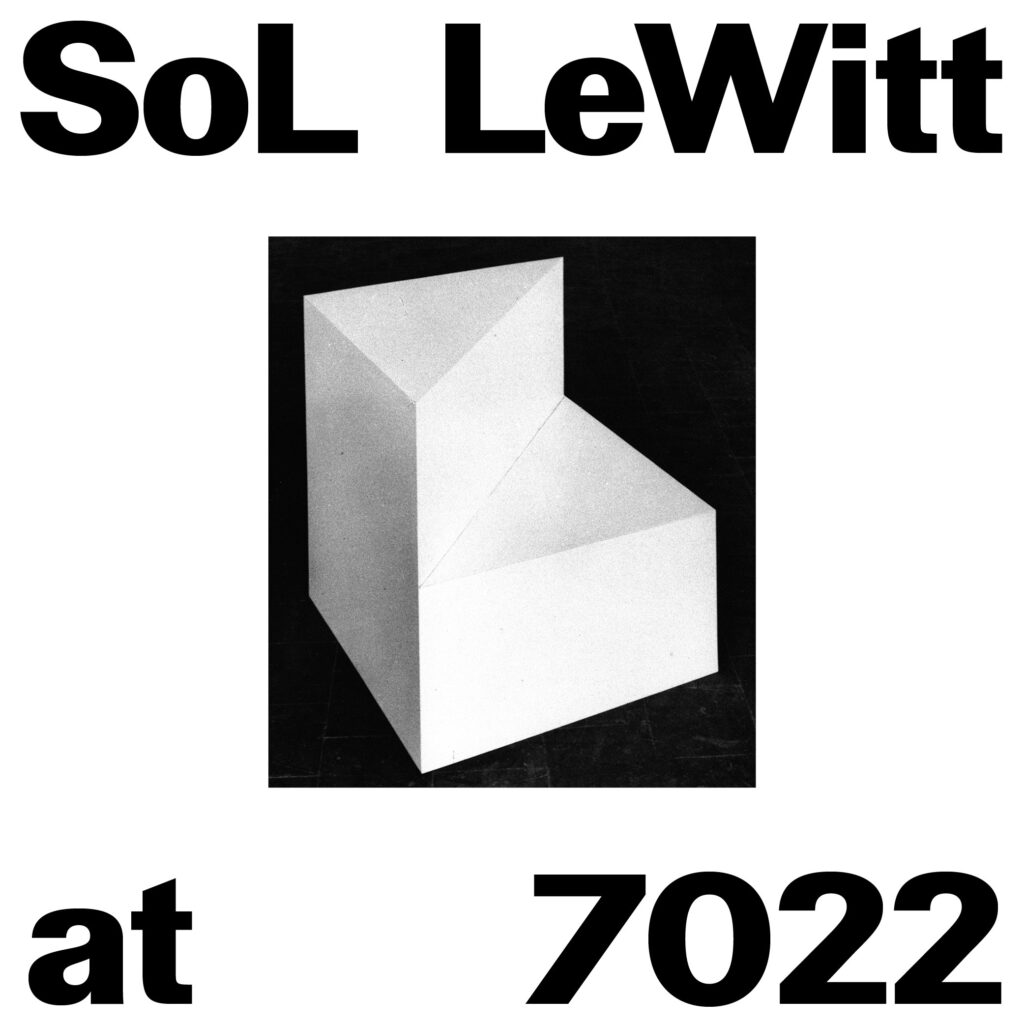Sol LeWitt - Forms Derived From a Cube is the first exhibition @settantaventidue conceived to occupy the entire gallery and both of its windows. The exhibition is divided into 2 chapters:
Sol LeWitt - Forms Derived From a Cube - The Canal Project Room Chapter
curated by Nicola Mafessoni & Daniel Marzona
Sol LeWitt was a key figure in both Minimal and Conceptual art; he produced a wide variety of two and three-dimensional works, from drawings, prints, photographs, paintings, installations, to artist's books, wall drawings, and structures in the form of towers, pyramids, geometric forms, and progressions. These works range in size from small objects and gallery-size installations to monumental outdoor pieces, and they are often conceived with a serial modulation which is generated through the application of premeditated rules or plans.
LeWitt's first serial sculptures were created in the 1960s using the modular form of the square in arrangements of varying visual complexity. He wrote the 'Sentences on Conceptual Art' which explore the relationship between art, practice and art criticism and he published many artist's books which are considered artworks themselves.
Settantaventidueis proud to exhibit one of his structures titled 'Form Derived from a cube': an open, modular shape which originates from the cube, a form that influenced the artist's research from the very beginnings. The wooden sculpture is painted white (instead of black or any other colour) to avoid any expressiveness, and is exhibited here for the first time with it's study, a drawing on paper that consists of identical linear elements which explain the concept and the proportions of the three-dimensional artwork, thus anticipating the large scale sculpture. The precious drawing was owned by the pivotal contemporary artist - and close friend of Sol LeWitt - Alighiero Boetti, and was part of his legendary collection.
Sol LeWitt - Forms Derived From a Cube - The Tubae Chapter
curated by Bruno Tonini
"I became interested in making books, starting about 1965, when I did the «Serial Project #1», deciding that I needed a small book to show how the work could be understood and how the system worked. From that time I began to do books as works in themselves, not as catalogues".
For Sol LeWitt the book is key to understanding an entire creative research: it marks its stages and clarifies methods as well as meanings. All of LeWitt's artist's books bear the author's stamp, in the sense that they are unequivocally and unmistakably “his”. All of his print works are governed by a formal method and a few instantly recognizable stylistic features. First of all, there is the white cover with the title in the center printed in black, while the information on the spine (title and artist's name) is printed in the same font. Other pieces of information, such as the publisher, place and year of publication, appear in sequence in the center of the first page. Many also have a clearly-worded subtitle serving as a kind of instruction manual for understanding the work's evolutionary process. The format is typically a small paper-bound booklet, stapled or simply glued together, almost always square, the prototypical shape from which all possible research can develop, as opposed to the rectangle, which the artist rarely used and only when strictly necessary.
In parallel to this work on artists' books, Sol LeWitt also developed the production of exhibition posters and invitations, which he considered equally important artistically, often directing the execution and personally curating the texts, layout and graphic design.
In the '60s and '70s, the lack of any absolute reference model pushed many artists to elaborate their own private system of rules to serve as a guide for their particular language. Lewitt solved this problem by using simple mathematical rules in his works. He used these to develop his own consistent, albeit useless, aesthetic system, often connecting words and abstract shapes in the same work. In this way he established a dialogue between diverse symbols and placed verbal and geometric languages on the same level: words become points on a plane, geometries are transformed into abstract schemas, the two communication systems are emptied of their original contents and reduced to simple elements in an elaborate visual-intellectual game.
"Conceptual art is not necessarily logical... What the work of art looks like isn't too important. It has to look like something if it has physical form... Conceptual art doesn't really have much to do with mathematics, philosphy, or any other mental discipline... It doesn't really matter if the viewer understands the concepts of the artists by seeing the art. Once it is out of his hand the artist has no control over the way a viewer will perceive the work. Different people will understand the same thing in a different way." (Sol LeWitt).

